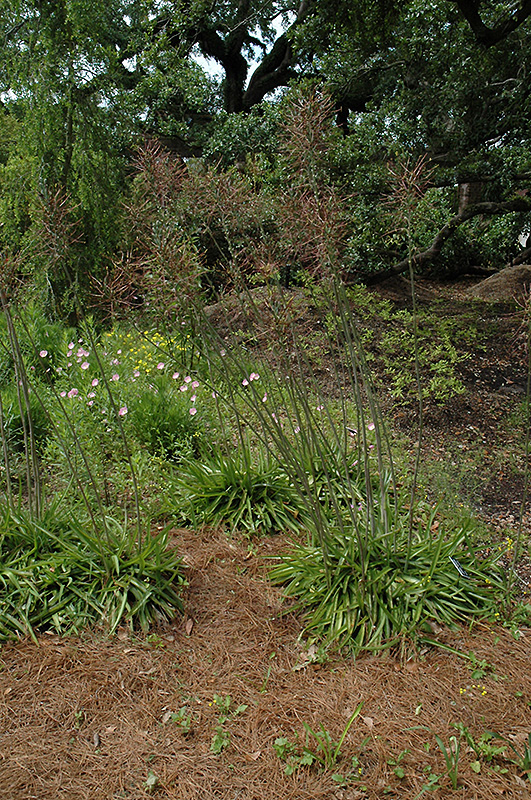Plant Finder
Plant Height: 14 inches
Flower Height: 4 feet
Spread: 16 inches
Sunlight:
![]()
Hardiness Zone: 7a
Other Names: Texas Tuberose, Agave variegata
Description:
This North American native has succulent clumps of dark green leaves that are mottled in light green or burgundy; tall spikes produce fragrant burgundy-dark red flowers that hummingbirds love; good drainage is highly recommended
Ornamental Features
Mottled Tuberose features bold spikes of fragrant burgundy tubular flowers with brown overtones rising above the foliage from mid spring to mid summer. Its attractive serrated sword-like leaves remain green in color with distinctive burgundy spots throughout the season.
Landscape Attributes
Mottled Tuberose is an herbaceous perennial with a rigidly upright and towering form. Its relatively coarse texture can be used to stand it apart from other garden plants with finer foliage.
This is a relatively low maintenance plant, and is best cleaned up in early spring before it resumes active growth for the season. It is a good choice for attracting butterflies and hummingbirds to your yard. Gardeners should be aware of the following characteristic(s) that may warrant special consideration;
- Self-Seeding
Mottled Tuberose is recommended for the following landscape applications;
- Mass Planting
- General Garden Use
- Groundcover
Planting & Growing
Mottled Tuberose will grow to be about 14 inches tall at maturity extending to 4 feet tall with the flowers, with a spread of 16 inches. It grows at a medium rate, and under ideal conditions can be expected to live for approximately 5 years. As an herbaceous perennial, this plant will usually die back to the crown each winter, and will regrow from the base each spring. Be careful not to disturb the crown in late winter when it may not be readily seen!
This plant should only be grown in full sunlight. It prefers dry to average moisture levels with very well-drained soil, and will often die in standing water. It is considered to be drought-tolerant, and thus makes an ideal choice for a low-water garden or xeriscape application. It is not particular as to soil type or pH. It is somewhat tolerant of urban pollution. This species is native to parts of North America.




